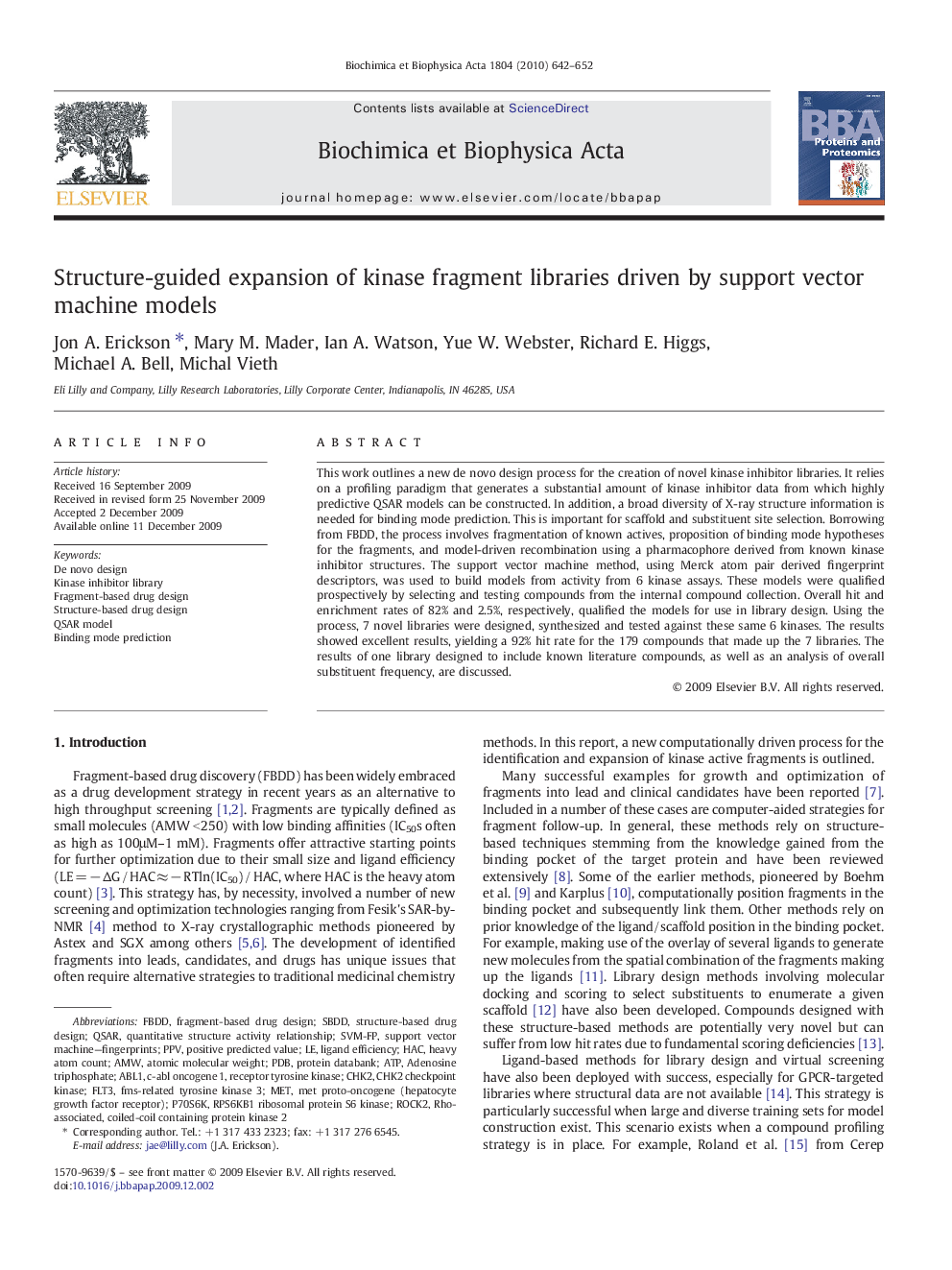| Article ID | Journal | Published Year | Pages | File Type |
|---|---|---|---|---|
| 10537797 | Biochimica et Biophysica Acta (BBA) - Proteins and Proteomics | 2010 | 11 Pages |
Abstract
This work outlines a new de novo design process for the creation of novel kinase inhibitor libraries. It relies on a profiling paradigm that generates a substantial amount of kinase inhibitor data from which highly predictive QSAR models can be constructed. In addition, a broad diversity of X-ray structure information is needed for binding mode prediction. This is important for scaffold and substituent site selection. Borrowing from FBDD, the process involves fragmentation of known actives, proposition of binding mode hypotheses for the fragments, and model-driven recombination using a pharmacophore derived from known kinase inhibitor structures. The support vector machine method, using Merck atom pair derived fingerprint descriptors, was used to build models from activity from 6 kinase assays. These models were qualified prospectively by selecting and testing compounds from the internal compound collection. Overall hit and enrichment rates of 82% and 2.5%, respectively, qualified the models for use in library design. Using the process, 7 novel libraries were designed, synthesized and tested against these same 6 kinases. The results showed excellent results, yielding a 92% hit rate for the 179 compounds that made up the 7 libraries. The results of one library designed to include known literature compounds, as well as an analysis of overall substituent frequency, are discussed.
Keywords
Related Topics
Physical Sciences and Engineering
Chemistry
Analytical Chemistry
Authors
Jon A. Erickson, Mary M. Mader, Ian A. Watson, Yue W. Webster, Richard E. Higgs, Michael A. Bell, Michal Vieth,
